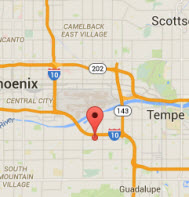Learn How To Screen Print With Catspit Productions, LLC
Guide To Choosing And Caring For Your Squeegees
It is important to fully understand how squeegees work in screen printing tee shirts or other textiles in order to achieve the best print quality with ease. Choosing the correct squeegee durometer, size and shape is most likely one of the single most overlooked details for beginning screen printers. The durometer measurement is not the only thing to consider when choosing a squeegee for any particular print job. And proper maintenance and care will also affect the squeegees ability to do its job right. The following is geared more toward textile screen printing but may also be relevant to other printing applications as well.
2- The second thing you need to look at is the squeegee shape. For the most part a rectangular, cut edge squeegee will suffice for many screen printing applications on flat surfaces of all kinds. When printing bottles or other cylindrical items a "V" shaped squeegee is used in a majority of the printing. Yet another type of squeegee shape is called "ball nose" or rounded. This shape will tend to leave very heavy deposits of ink with less resolution. That means it will print more ink but the edges of the print areas will be less sharp. There are what is known as a standard squeegee and a dual durometer. The dual durometer squeegee combines the values of two different durometer squeegees into one. There are also triple durometer squeegees.
3- The last property to think about when picking your squeegee for printing is the size or length. This is another point many people fail to recognize as an important issue. But the bigger the squeegee the higher the friction is between the mesh and the squeegee blade. That can cause stencil drag which causes mesh distortion and thus registration problems. It will adversely affect not only the registration but the overall clarity of the print and even the consistency of the ink deposit.
Believe it or not the urethane materials squeegees are made of are absorbent. They can actually swell and deteriorate with prolonged contact to inks or other chemicals. That's why it is very important to clean squeegees immediately after printing and to allow them to "rest" between long print runs. When possible use a different squeegee daily for printing duties in your shop. Meaning use a particular one on Monday and then rotate to a different squeegee on Tuesday and so on for the entire week. Rotating squeegees will not only prolong their life span but it will also improve performance. It is also recommended that you keep the blade edge sharp when using rectangular squeegees for screen printing.
It can be daunting to think about all of the major and minor details one needs to consider when screenprinting tee shirts. If you can remember to take the time to work smarter, then your print results will be not only better but much easier to achieve too.


 Screenprinting Equipment From Catspit Productions
Screenprinting Equipment From Catspit Productions


